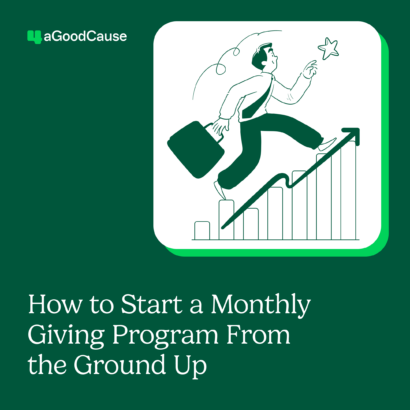Facts and statistics do not entice donors. People do—the story of those people do. And more specifically, the story of one of those people at a given moment. When we present the larger issues or problems our nonprofits are trying to solve, we overwhelm our donors. If we break those problems down and name them—by person, by individual issue or story and by one donor’s impact, then your audience feels like that individual contribution really makes a difference.
Identify your ‘Story of One’
Your story may have enough ‘legs’ to be used for an entire year. Or you may want to identify multiple stories to highlight each month, each quarter, etc. Either way, set your ‘Story of One’ at the beginning of the year and work with both your marketing and fundraising teams to develop communication and donor strategies around that.
Consider:
- Which beneficiaries have demonstrated change (what was his/her life like prior to becoming a part of or partaking in the services offered by your nonprofit?)
- Who is comfortable with you naming their initial problem and talking about their turnaround, recovery or success after being a part of your organization?
- What have you seen change in the life of others when they have worked with you?
Identify them. Name them. Describe them so that your readers can picture that person and connect with their story even if they didn’t have a visual from which to do so.
Use your ‘Story of One’ on your nonprofit blog
We can tell our stories in many ways, but your blog is a channel where this story can live indefinitely. It can be used as a springboard to (and from) other channels and, ultimately, drive action from donors.
CTA ideas for converting donors after reading your ‘Story of One’
Your donors are interested. They’ve read your blog post, they can see the impact that has been made on the individual you’ve highlighted, but now what? Think about what you want your donor to do after they’ve read your ‘Story of One’ and tie your CTAs (calls to action) into your post in ways that still resonate with the story’s theme. Some of these CTAs can be hard donor asks and others can be softer sells, guiding readers to other portions of the story (where then the full ask appears).
For instance:
- Join TruPartners in supporting Sally’s continued education by making a $100 donation today
- Learn more about Sally’s journey in her full interview with our executive director
- Your donation of $200 will provide books to another child like Sally next month; click to give
- We’d like to make Sally’s story county-wide; help us in our quest to provide supplies to 10 additional children next month
One story, multiple channels
Getting your ‘Story of One’ on your blog is a great first start. Now, tell that story across multiple platforms—from your blog to your donation landing page and everywhere in between. Once you have identified your story, share nuggets of that story through:
- A series of Facebook posts
- A video highlight or story
- The original blog post that turns into a series of posts
- Campaign-based emails (specifically around this story) and/or through your regular email newsletter
- In direct mail appeal letters, highlight this story to entice donors to give
As you craft your multi-channel strategy to share your stories, consider your cadence—the number of times you will share the same story. With different lead-ins and introductory text, you can (and should) share your ‘Story of One’ multiple times during the course of your campaign, month, quarter or year.
Think about how you are impacted by good storytelling—when we know the name and background of the individual experiencing the need, it opens our hearts to hear more about what we can do to make a difference. That is the power of the Story of One.



